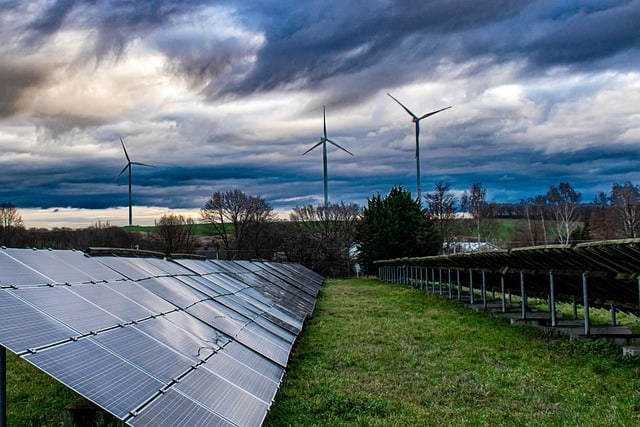As we stand at the forefront of the next industrial revolution powered by green technology, the world is pulsating with possibilities.
Harnessing the power of five groundbreaking examples of green technology, we are poised to rewrite the world’s energy narrative.
A world where sustainability doesn’t stand as an afterthought but as the central strategy guiding our progress.
Understanding Green Technology

Green technology, often referred to as clean technology, strives to lessen environmental impacts through innovative solutions. These technologies enable a more sustainable approach to production, which not only benefits the environment but also enhances the quality of life for humanity.
From harnessing solar energy to recycling waste, green technology is a broad spectrum with an optimistic view of a cleaner, healthier world. It’s time we roll up our sleeves and dive into the heart of this revolution.
The Need for Green Technology
Our planet’s health is deteriorating, and the need for sustainable solutions is more pressing than ever.
Deforestation, pollution, climate change – these are all ramifications of our actions, and the only antidote lies in the adoption of green technology.
The emphasis on these technologies isn’t just a fad; it’s an absolute necessity for survival.
5 Examples of Green Technology That Will Change The World
As we journey into the realm of green technology, we unveil five examples that not only present promising solutions for today’s challenges but are also poised to transform the future.
Solar Power
Solar power is the epitome of harnessing nature’s bounty for our benefit. Through solar panels, we convert the sun’s energy into electricity, making it an infinite and renewable energy source.
Unlike fossil fuels, the use of solar power releases zero greenhouse gases, underlining its environmentally friendly nature.
By scaling up the adoption of solar power across the globe, we stand a chance at creating an energy-efficient world, where the sun, our lifeline, fuels our homes, offices, and even our vehicles.
Wind Energy
Wind energy, another gem in the crown of green technology, is transforming our energy landscape. Through strategically placed wind turbines, the kinetic energy of the wind is converted into electricity.
Wind farms, both onshore and offshore, are increasingly becoming a common sight, symbolizing a shift toward renewable energy.
As an infinite and clean energy source, wind energy can significantly reduce our reliance on fossil fuels, pushing us toward a greener and more sustainable future.
Hydroelectric Power
Hydroelectric power is the harnessing of the power of flowing water to generate electricity. It’s an age-old method of generating power that still holds immense potential.
The operation of hydroelectric plants results in negligible emissions, making it a clean energy source. Furthermore, it’s not just about massive dams. Small-scale hydroelectric plants, tidal energy systems, and even wave energy technologies contribute to our energy mix.
With the right investment and infrastructure, hydroelectric power can significantly contribute to a green and sustainable energy future.
Electric Vehicles
Electric vehicles (EVs) are ushering in a new era in the transportation sector. Running on electricity, either entirely or partially, EVs emit far less greenhouse gas compared to their traditional counterparts.
Furthermore, the growing sophistication in battery technology and charging infrastructure is making EVs a feasible alternative.
As we move towards a greener tomorrow, the rumble of gas-guzzling engines is slowly being replaced by the quiet hum of electric motors. The shift is not just in mobility but in our mindset toward sustainability.
Waste-to-Energy Technology
Waste-to-energy technology offers a novel way of dealing with two pressing problems – waste management and energy production.
It’s a process that transforms waste materials into heat, electricity, or fuel through various processes. In essence, it turns what was once deemed ‘trash’ into a valuable ‘treasure.’
By optimizing and promoting waste-to-energy technologies, we can address the burgeoning waste problem and simultaneously diversify our energy resources, promoting a cleaner and more sustainable world.
Green Technology and the Future

The future of green technology is bright and promising.
As technology progresses and evolves, we can expect a greener, cleaner world.
Challenges in the Implementation of Green Technology
Despite the undeniable benefits and immense potential of green technology, several obstacles hinder its widespread adoption.
These challenges need to be acknowledged and addressed to accelerate the transition to a sustainable future.
- High Initial Costs: Green technologies often require significant upfront investment. Be it solar panels, wind turbines, or electric vehicles, the initial cost can be steep, which deters many from adopting these technologies.
- Lack of Awareness: Many people are still unaware of the benefits of green technology and how it can be integrated into their daily lives. This lack of awareness slows down the adoption of green technology.
- Policy Barriers: The absence of supportive policy frameworks or incentives for green technologies can limit their development and implementation. Favorable policy interventions are crucial for green technology to thrive.
- Technological Constraints: Some green technologies are still in their developmental phase and may not be as efficient or reliable as their conventional counterparts. Constant innovation and research are needed to improve these technologies and make them more competitive.
The Future Scope of Green Technology
The future of green technology is not just promising but is essential for the survival of our planet. As we grapple with environmental issues like climate change, air pollution, and waste management, green technology offers a beacon of hope.
It is projected that green technology will evolve and expand in unexpected ways, further consolidating its position in our lives.
For instance, solar power technologies will likely become more efficient and less expensive, making them more accessible to the masses. Wind energy will continue to mature, with larger and more efficient turbines being developed.
Electric vehicles will gradually become the norm, and fossil fuel-based vehicles may start phasing out. Waste-to-energy technology will become more refined, contributing significantly to managing waste and generating power.
Additionally, new and emerging green technologies, like algae biofuel or artificial photosynthesis, may become mainstream, pushing the boundaries of what we currently understand as green technology.
As such, the future scope of green technology is immense, exciting, and indispensable for a sustainable future.
FAQs
How does green technology impact the economy? Green technology positively impacts the economy by creating jobs, reducing costs in the long run, encouraging innovation, and fostering sustainable development.
What is the importance of green technology? Green technology is crucial for ensuring a sustainable future. It helps alleviate environmental issues, conserves natural resources, reduces waste, and promotes a healthier lifestyle.
Can green technology help in combating climate change? Yes, green technology plays a vital role in combating climate change. By reducing greenhouse gas emissions and conserving resources, it mitigates the impacts of climate change.
What are the challenges in implementing green technology? The challenges in implementing green technology include high upfront costs, lack of awareness, policy barriers, and technological constraints.
How does green technology affect society? Green technology affects society positively by improving the quality of life, promoting health and well-being, and encouraging a more sustainable and responsible lifestyle.
Key Takeaways

Green technology is the key to unlocking a sustainable future.
The examples highlighted – solar power, wind energy, hydroelectric power, electric vehicles, and waste-to-energy technology – are catalysts of change.
They represent a beacon of hope amidst a rising tide of environmental concerns, offering a green lifeline to our planet.
The world is on the cusp of a green revolution, and we all have front-row seats to this transformative journey.
I’m Thomas, the owner of SustainableWave. Passionately promoting a sustainable planet. With experience in various eco-roles, I’ll share green tips, sustainability hacks, and personal eco-journeys on my blog.






